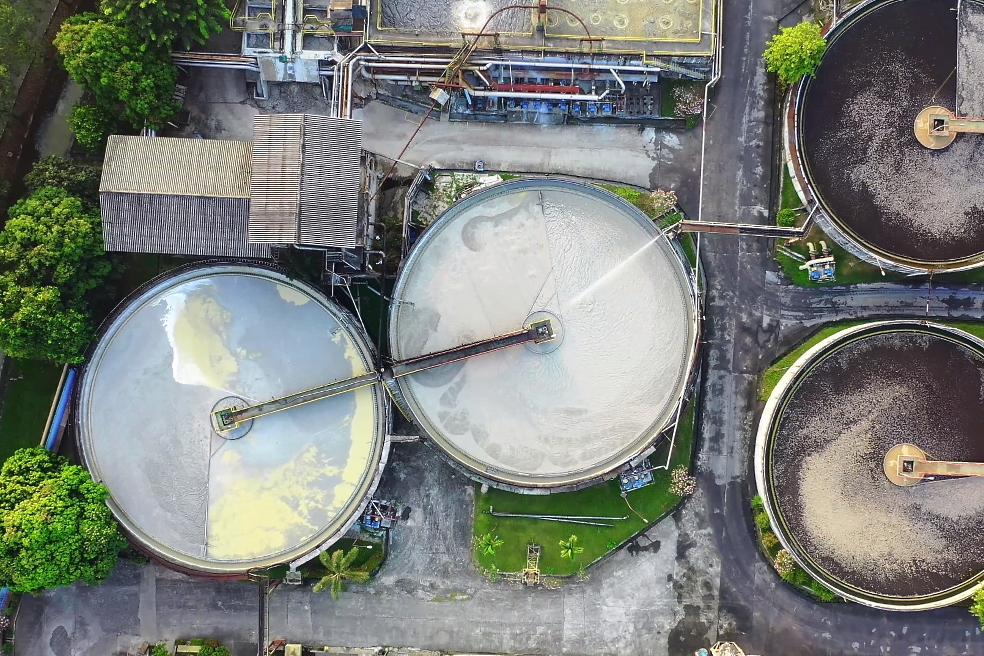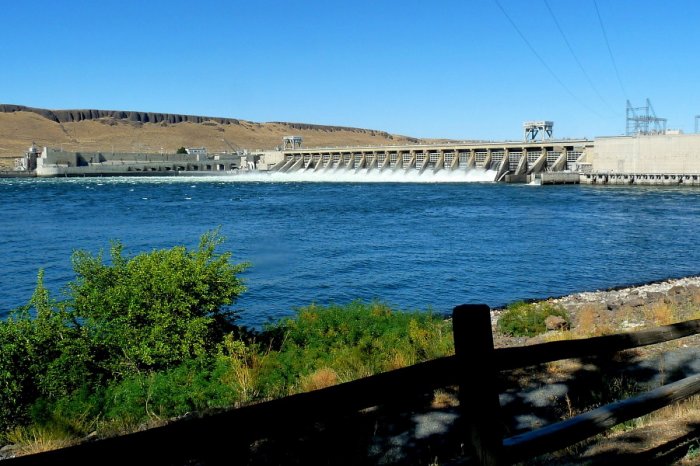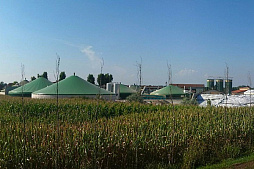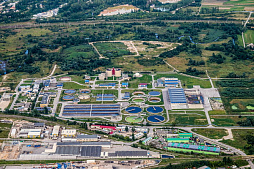After receiving the necessary documents (application form and project presentation), our team will try to review your request as soon as possible, and leading experts will offer the best options for project funding.
The high content of hazardous organic and inorganic pollutants, the active growth of pathogenic microorganisms, a decrease in the concentration of dissolved oxygen in water bodies and the disruption of entire ecosystems cause concern for decision-makers and require large investments in wastewater treatment.
The construction of wastewater treatment plants and the implementation of large environmental projects are becoming an important area of activity for both governments and private capital.
Tighter environmental standards require new measures to improve water quality, including the integration of expensive mechanical equipment and biological wastewater treatment technologies.
According to the World Bank, in 2007-2017, global spending on water and sewerage projects exceeded $ 22 billion, with 84% of investments in wastewater treatment being in greenfield projects, which means a predominance of new facilities in this segment of infrastructure. A significant proportion of these projects are being implemented in China and other East Asian countries, where governments have recently turned towards environmental protection.
An important trend today is considered to be the rapid improvement of wastewater treatment technologies and an increase in the cost of projects.
In 2014, the average cost of construction of a wastewater treatment plant was $ 16 million, and in 2017 this figure quadrupled, reaching 64 million for a medium-sized facility.
Of course, the implementation of such large-scale projects requires the use of combined project finance (PF) instruments and increased government support.
The correct choice of financing instruments for wastewater treatment projects determines the final cost of the project, as well as the time frame and technical level of its implementation. Since modern wastewater treatment plants usually have significant investment costs in relation to the size of the facility, debt financing plays a key role in the implementation of such projects at the local and national level.
The international financial team of ESFC Investment Group is ready to help your company choose the best financing scheme.
We are ready to offer flexible long-term loans for the construction and modernization of the WWTP, as well as facilitate the organization of project finance schemes.
Below we have listed the main features, risks and benefits associated with the implementation of wastewater treatment projects using corporate finance schemes or innovative project finance instruments, including through public-private partnerships (PPPs).
Choosing a financing model for wastewater treatment projects
Participants in wastewater treatment projects can take different approaches to financing construction.In practice, the vast majority of financial models involve long-term financial liabilities (usually in the form of a bank loan in the case of continental European companies or corporate bonds, which are often issued by UK and US companies).
Due to the variety of financial instruments, the specific formula for financing and implementing a wastewater treatment project is closely related to its nature. In this regard, financiers distinguish between project finance (PF), which isolates the risks of a project from the assets of its initiators, and corporate finance, which is based on the assets and financial performance of the initiators.
Considering the high cost of implementing modern wastewater treatment projects, including expensive bioreactors, sedimentation basins and complex pipeline systems, the payback period of the project can be quite long.
However, the financial prospects do not allow us to fully understand the significance of such projects, which are designed to provide society with clean and safe water.
For this reason, the financing of wastewater treatment plants is significantly different from the traditional approach to financing business projects, being supported by both official guarantees and a system of government incentives.
The essence of project finance is the implementation of a specific project on the basis of a specially created company (SPV / SPE). A project company with no history of operations has significant capital contributed by project sponsors and has a limited lifecycle that is directly related to the project lifecycle.
An important feature of project finance is that financial resources are allocated against the future financial flows that WWTP must generate after commissioning.
In the case of investment projects financed and implemented according to this formula, companies usually use high leverage as a result of a high share of borrowed capital in the project structure.
Since the main source of debt repayment for SPVs is the cash flows that will be generated by the wastewater treatment plant in the future, participation in such a project requires in-depth analysis and risk assessment.
Project finance is associated with assets created as a result of economic activities of participants or the assignment of future receivables arising from project revenues. In both cases, these cash flows are not available at the start of funding. It is important to emphasize that the project finance formula is usually used for independent projects that generate a stable income.
Project sponsors are not liable for SPV debts with their assets or have limited liability, shifting risks and debt servicing onto the shoulders of the project company.
Non-recourse funding is considered one of the main strengths of this model.
From the point of view of the initiating companies, project finance for the construction of wastewater treatment plants has numerous advantages, which are summarized below:
• Diversification of risks. Due to the high share of external capital in the financing structure of the WWTP project, the associated risk is borne not only by the initiators, but also by financial institutions and other participants.
• Off-balance sheet nature of financing. Attraction of financial resources through special PF mechanisms does not burden the financial statements of the initiating companies and are displayed only in consolidated reports.
• High creditworthiness of SPV. Separating the project into a separate legal entity creates ample opportunities for attracting significant borrowed financial resources.
• Flexibility of contractual terms. Project finance tools help tailor the agreement to the specific needs of a particular project.
• Tax optimization.

However, there are some negative aspects of project finance to keep in mind:
• Increase in the cost of borrowed funds. Due to the high risk potential lenders expect a higher return on their investment and higher project performance.
• Active intervention of capital providers in the construction and management of the enterprise.
• Increase in fixed costs. Conducting an in-depth analysis of the investment project and drawing up detailed financial, legal and technical documentation for investors.
• A long process of preparing an agreement and selecting participants. Multi-stage negotiations requiring a professional approach.
For comparison, in the case of using corporate finance instruments, the investment project is implemented within the framework of an already operating organization that has a certain history, assets, business experience, an established market position and financial structure.
The construction and modernization of wastewater treatment plants with a bank loan links the debt service to the current activities of the initiator.
Thus, the company increases the level of debt and worsens its financial statements.
In this case, a separate company is not created, so the risk of the project is shifted to the initiating company. Obviously, this approach is most suitable for the construction of small and medium-sized wastewater treatment plants associated with a specific enterprise (industrial wastewater contaminated with hazardous substances).
In the latter case, capital providers seek to obtain a significant level of control over the day-to-day activities of the company, including through contractual provisions restricting certain transactions (for example, the sale of assets and participation in capital-intensive investment projects).
Linking an investment project with the rest of the company's business has many advantages.
For example, the possibility of supporting the project with additional funds received in the framework of current activities, or a lower cost of debt financing.
However, it is important for initiators to consider the transfer of risks that are associated with the rest of the company's activities.
Practice shows that project finance and public-private partnership instruments are currently dominant in the implementation of water treatment plant projects, especially when it comes to the construction, modernization or expansion of large municipal wastewater treatment plants.
In developing countries around the world, more and more large greenfield and brownfield projects are being implemented on a build-operate-transfer (BOT) basis, including in China, Indonesia, Brazil, India and other countries. Overall, project finance accounts for more than 50% of new capital-intensive water and wastewater projects in some regions of the world.
If you are interested in project finance services for the construction of wastewater treatment plants, we are ready to provide professional assistance at any stage of the project.
ESFC Investment Group offers long-term financing of capital intensive projects, financial modeling, SPV creation and management, tax optimization, project management and consulting services.
Financing of wastewater treatment plants through public-private partnerships
An important trend in public administration is the delegation of some public functions to private capital.Governments are withdrawing from many areas of economic, social and communal activity, remaining formally responsible for these strategically important areas.
The privatization of the water and wastewater sector most often means that wastewater treatment is no longer funded by the taxpayer (budget), as these costs are borne by the interested party under various contracts.
This new form of cooperation between the private and public sectors in various aspects is widely known as public-private partnerships (PPPs).
Public-private partnership covers the entire area of cooperation between both sectors, including complex organizational measures to achieve the set goal. In a narrower sense, PPP includes special types of contracts between a public authority and a private structure related to the implementation of a specific investment project.
The new philosophy of public administration includes the construction and modernization of wastewater treatment plants through PPP, widely attracting private capital while maintaining public control over water and wastewater projects. The reason for this transition is that water infrastructure can function successfully in market conditions, and there is no reason for the authorities to carry out this activity alone.
In view of the above, the most important elements of public-private partnership in water and wastewater are:
• Combining efforts of government agencies and private capital.
• Contractual nature of relations within the framework of concession agreements.
• The targeted nature of the agreements to provide services traditionally offered by state-owned companies and their divisions.
• Optimal division of project tasks and distribution of risks.
• Receiving mutual benefit.
Long-term experience of cooperation based on the public-private partnership model indicates its significant advantages.
The state and society receives from private companies an additional inflow of financial resources, advanced management skills, added value for the consumer and society, more efficient determination of needs and optimal use of resources.
Public-private partnership allows to actively implement projects in conditions of limited availability of public funding, increasing the inflow of investments in environmental projects, as well as accelerating their implementation.

PPP models can assign responsibility for engineering design, construction, operation and project management to private companies, relying on the broad technical and financial capabilities of world leaders.
The use of advanced organizational and management tools helps to reduce overall costs and optimizes the structure of WWTP projects.
Improving the efficiency of this type of projects is extremely difficult to achieve within the constraints associated with excessive bureaucratization of the public sector and the traditional lack of funding for wastewater treatment plants in many countries of the world.
Concluding a PPP contract means better risk sharing for both parties.
An important principle of PPPs is to place the risk on the party to the contract that is able to manage that risk at the lowest cost.
The PPP contract provides the best incentives for implementation.
The assignment of project risk to the private sector contractor should motivate him to improve the management and implementation of related projects. In most PPP projects, the private sector contractor is paid full payment for his services only if he meets the standards that are constantly being raised in the sector.
International experience in financing wastewater treatment projects demonstrates that the quality of services provided under PPP is generally better than the quality of services provided under traditional government contracts.
This may be due to better service integration, economies of scale, innovation, or the application of incentives and penalties usually included in a PPP contract.
PPP helps to increase the profitability of projects in the field of water and wastewater treatment.
Private companies can generate additional revenue from third parties, thereby reducing the need for subsidies. Additional income can be obtained through the use of spare capacity and the sale of assets.
Another benefit of using PPP is improved project management. By transferring responsibility for the delivery of public services, government agencies will perform regulatory functions and, instead of managing the delivery of services on a day-to-day basis, they will focus on planning and monitoring them globally. By creating competition in the sector, PPP allows consumers to compare government services to market standards.
Our financial services for water and wastewater treatment projects
ESFC Investment Group, an international financial and engineering company headquartered in Spain, offers long-term financing for water treatment and aeration projects on flexible terms.Our comprehensive professional services include the following:
• Investment loans from 50 million euros for up to 25 years.
• Financial modeling, detailed assessment and project forecast.
• Organization of project finance, including the creation of an SPV.
• The whole range of financial and legal consulting services.
• Official guarantees, etc.
Together with international partners, we offer advisory services related to the attraction of external financing, the creation and management of SPVs, the organization of public-private partnerships in the EU and beyond.
New investments in the construction and modernization of wastewater treatment plants often require professional engineering services, including engineering design, technical requirements and documentation.
ESFC Investment Group successfully operates around the world, including Spain, Mexico, Brazil, China, Germany, USA, France, etc.
If you are looking for a reliable financial and technical partner for the implementation of large projects in the field of water and wastewater treatment, please contact our representatives.






















